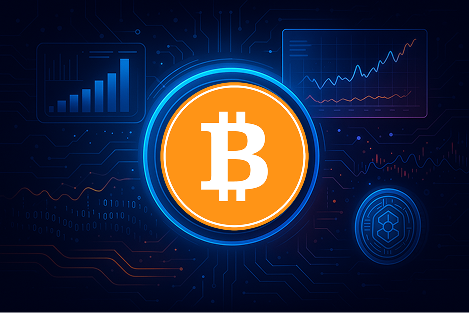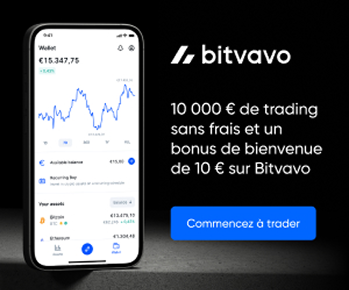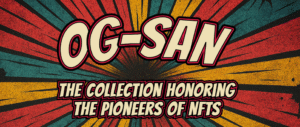Chainlink Price: Crypto Analysis, Functionality and LINK Token

Learn how Chainlink works, what the LINK token is used for, and why this crypto is essential to smart contracts and decentralized finance.
Chainlink (LINK) is a key cryptocurrency in the blockchain ecosystem thanks to its strategic role as an intermediary between blockchains and real-world data. This comprehensive guide helps you understand how Chainlink works, track LINK’s price trends, and decide whether buying Chainlink is a sound long-term investment. The article dives deep into its technology, value proposition, and real use cases.
Key takeaways
- Short-term volatility: driven by crypto market cycles and integration announcements.
- Key influencing factors: oracle adoption, DeFi growth, institutional partnerships.
- Long-term growth potential: essential to the expansion of smart contracts across finance, insurance, and beyond.
- Positioning vs major cryptos: leading decentralized oracle solution, used by Ethereum, Polygon, Arbitrum…
Introduction to Chainlink (LINK)
- Symbol: LINK
- Category: Blockchain infrastructure, Decentralized Oracle
- Main function: Connect smart contracts to verified external (off-chain) data
How Does Chainlink Work?
Chainlink runs on a decentralized oracle architecture designed to bridge blockchains with external data. This network enables smart contracts to respond to real-world events securely, significantly expanding their use cases. Instead of relying on a single data source, Chainlink aggregates data from multiple independent nodes to avoid manipulation. These nodes verify accuracy, perform analysis, and deliver results to smart contracts. Decentralization ensures strong censorship resistance and fault tolerance.Technology Used
- Blockchain / Consensus: Operates on Ethereum (PoS), without its own blockchain
- EVM Compatibility: Yes (Ethereum, Polygon, Arbitrum, BNB Chain…)
- Technical Specifics:
- Modular decentralized oracles
- OCR (Off-chain Reporting)
- VRF, Proof of Reserve, Keepers
- Cross-chain interoperability (CCIP)
LINK Token Utility
- Payment for oracle services
- Staking to secure the network
- Access to premium data and advanced functions
Project History and Launch
Chainlink was launched in 2017 by SmartContract.com in the United States. The project quickly became the standard for connecting blockchains to real-world data.Key Milestones
- 2017: ICO raises $32M
- 2019: Mainnet launch on Ethereum
- 2020–2021: Major DeFi adoption
- 2021: Launch of OCR, Keepers, VRF v2
- 2022: Proof of Reserve, CCIP development
- 2023: Launch of staking v0.1
Founders and Team
Founding Team
- Sergey Nazarov – CEO: Smart contract expert and blockchain entrepreneur since 2014
- Steve Ellis – CTO: Software engineer and co-founder of SmartContract.com
- Ari Juels (advisor): Cryptographer and Cornell professor
What Makes [Nom cryptomonnaie] Unique?
Unique Features of Chainlink
Innovative Use Cases
- Price oracles for DeFi (Aave, Synthetix…)
- Parametric insurance (e.g., Arbol)
- Blockchain lotteries using VRF
- Reserve audits (USDC, WBTC…)
- Smart contract automation (Keepers)
- Cross-chain interoperability (CCIP)
Unique Value Proposition
- Multi-source data reliability
- Modular infrastructure (VRF, PoR, CCIP…)
- Economic model based on staking and reputation
- Operates on 15+ EVM-compatible blockchains

Implicit Comparison
- vs Band Protocol: Less adopted, focused on Cosmos
- vs API3: Lower integration, different oracle model
- vs Pyth Network: Specializes in high-frequency finance with curated validators
Conclusion and Future Outlook
Chainlink is a technical pillar of Web3, delivering reliable data and connectivity for smart contract execution. With decentralized architecture, multi-chain compatibility, and a growing ecosystem, it meets all criteria for strategic and sustainable infrastructure. Chainlink’s future hinges on three drivers: staking adoption for enhanced security, growing integration in DeFi and Web3 services, and the success of CCIP for cross-chain interoperability. If these materialize, Chainlink could become as essential to decentralized internet as TCP/IP is to today’s web.
FAQ
- What is the Chainlink (LINK) token used for? LINK is used to pay oracle nodes, access premium services, and participate in network staking.
- Is it a good investment? Chainlink is a core Web3 project with real utility, though it remains subject to crypto market volatility.
- How does it differ from Band Protocol? Band is less adopted and focused on Cosmos. Chainlink supports multiple chains and is heavily integrated into DeFi.
- Where can I store the LINK token? LINK can be stored on MetaMask, Ledger, Trust Wallet, and any ERC-20/EVM-compatible wallet.
- Is the project secure? Yes, Chainlink uses decentralized architecture, audits, and reputation systems with increasing staking adoption.
- How can I buy Chainlink? LINK is available on Binance, Coinbase, Kraken, or via DEXs like Uniswap.
Disclaimer :
Trading is risky and you may lose all or part of your capital. The information provided does not constitute financial advice and/or an investment recommendation
Top-Rated Platforms to Trade Crypto
Explore Our Financial Views on the Market
Crypto News & Insights
European Blockchain Convention 2025: Connecting Europe’s
Europe’s blockchain landscape is evolving rapidly despite challenges. Blockchain job...
Blockchain Life 2025 Dubai: A must-attend
The Blockchain Life Forum 2025, happening on October 28–29 in...













